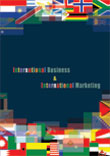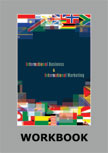Mercosur - Changing Course? |
ICMR HOME | Case Studies Collection
»
Business Environment Case Studies Please note: This case study was compiled from published sources, and is intended to be used as a basis for class discussion. It is not intended to illustrate either effective or ineffective handling of a management situation. Nor is it a primary information source. |
||||||||||
|
"Launching an integration initiative is easier than sustaining it."1 - Enrique V. Iglesias, President, Inter-American Development Bank in 2000.2 Introduction
Argentine Economy Minister Felica Miceli called the agreement "a triumph of cooperation and common work,"and urged further steps to strengthen Mercosur, but some analysts were critical of these moves to restrict trade and felt it was not in line with the idea of a Customs Union4 (CU) at all (Refer Exhibit II for stages of economic integration).
Mercosur - Changing Course? - Next Page>>
1] Enrique V. Iglesias, "Twelve Lessons from Five
Decades of Regional Integration in Latin America and the Caribbean,"presentation to the Conference of the Institute for the Integration of Latin
America and the Caribbean, Buenos Aires, November 27-28, 2000, www.iadb.org/INT/Trade/1_english/2_WhatWeDo/Documents/
c_OtherPubs/Speeches/e_talk%20points%20intal%2035%20years%20Eng.pdf. |
Case Studies Links:-
Case Studies,
Short Case Studies,
Simplified Case Studies.
Other Case Studies:-
Multimedia Case Studies,
Cases in Other Languages.
Business Reports Link:-
Business Reports.
Books:-
Textbooks,
Work Books,
Case Study Volumes.



